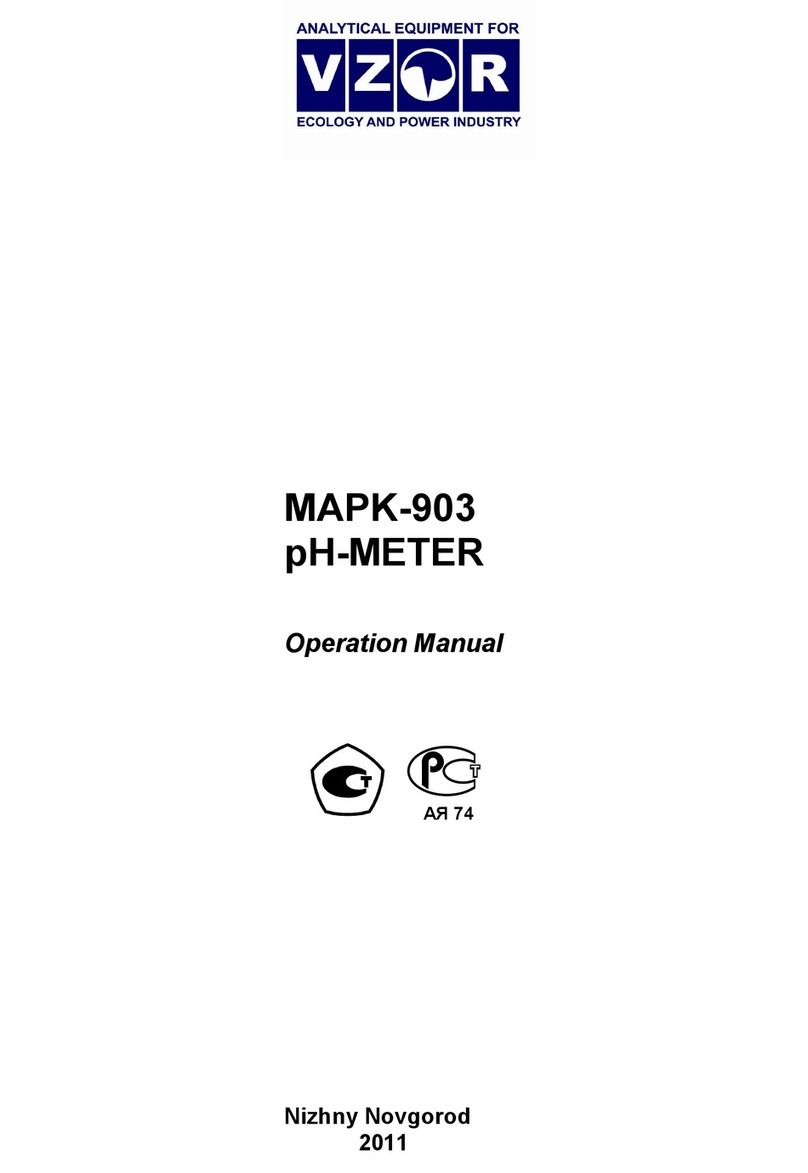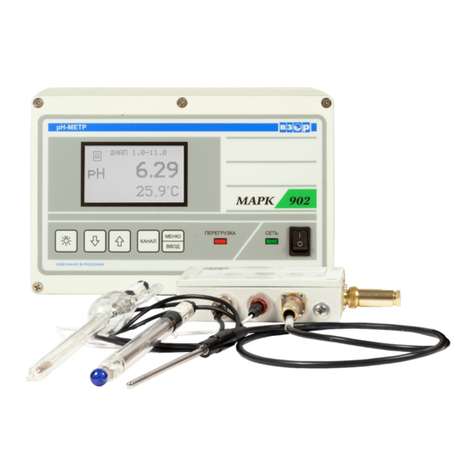
6
1.3 Technical data
1.3.1 Range of dissolved oxygen concentration (hereafter “DOC”)
measurements at analyzable fluid temperature of 20 С, ppm ...……... from 0 to 10.
The upper limit of DOC measurement range shall be governed by the
analyzable fluid temperature and is shown in Table 1.2.
Table 1.2
t,
C 0 5 10 15 20 25 30 35 40 45 50
DOC,
ppm 17.45
15.29
13.48
12.10
10.00
9.85
8.98
8.30
7.69
7.12
6.59
1.3.2 The range of analyzer allowable basic absolute accuracy when
measuring DOC at analyzable fluid temperature of (20.0 ± 0.2)С and ambient air
temperature of (20 ± 5) С, ppm ……………………….……….…… ± (0.003+0.04С),
where С hereinafter is DOC measured value in ppm.
1.3.3 The range of analyzer allowable complementary absolute accuracy
when measuring DOC governed by changes in analyzable fluid temperature per
each ± 5 С deviation from normal temperature (20.0 ± 0.2) С within the operating
temperature range from 0 to plus 50 °С, ppm …………...….……………… ± 0.012C.
1.3.4 The range of analyzer allowable complementary absolute accuracy
when measuring DOC governed by changes in analyzable fluid temperature per
each ±10 °С deviation from normal temperature (20.0 ± 0.2) С within the operating
temperature range from plus 1 to plus 50 °С, ppm ..................... ±(0.002 + 0.002C).
1.3.5 The range of analyzer allowable absolute accuracy when measuring
DOC at analyzable fluid temperature coincident with calibration temperature lying
within the temperature range from plus 15 to plus 35 С and at ambient air
temperature of (20 ± 5) С, ppm ..…………………………………. ± (0.003 + 0.04C).
1.3.6 Measuring range of analyzable fluid temperature, С ……. 0 to plus 50.
1.3.7 The range of analyzer allowable basic absolute accuracy on measuring
analyzable fluid temperature at ambient air temperature of (20 ± 5)С, С ….. ± 0.3.
1.3.8 The range of analyzer allowable complementary absolute accuracy on
measuring analyzable fluid temperature governed by changes in ambient air
temperature per each ± 10 С deviation from normal (20 ± 5) С temperature within
the operating range from plus 1 to plus 50 С, С ...…….…..…………………. ± 0.1.
1.3.9 Maximum allowable analyzer reading setting time t0.9 on DOC
measurements, min ……….…………………………………………………….….…... 2.
1.3.10 Maximum allowable analyzer reading setting time tу on DOC
measurements, min ………………………………………………………………….... 30.
1.3.11 Maximum allowable analyzer reading setting time t0.9 on measuring
analyzable fluid temperature, min ……...………………………………………..……. 1.
1.3.12 Maximum allowable analyzer reading setting time tу on measuring
analyzable fluid temperature, min ………..…………………………………….…….. 3.





























